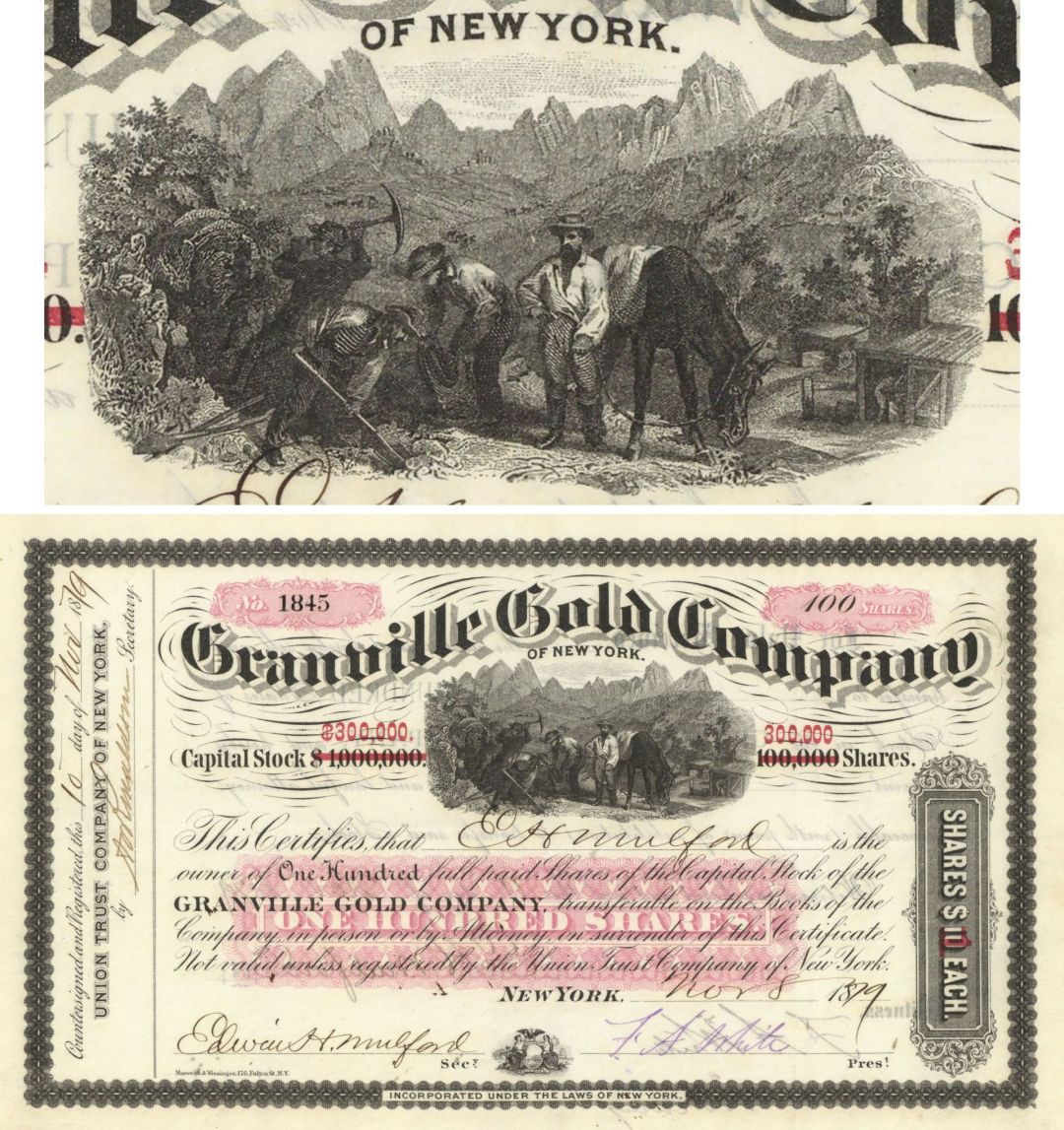Granville Gold Co. - Beautiful Pink Underprint - 1879 dated North Carolina and New York Mining Stock Certificate
Inv# MS1642 StockStock printed by Maverick & Wissinger., New York. In 1804, the U.S. Mint documented the initial gold mining activities in North Carolina. Established in the 1870s, this company owned two gold mines in the state: one in Stanly County, approximately 23 miles southeast of Salisbury, along the banks of the Tadkin River, and the other in McDowell County, situated on Muddy Creek. While the latter mine primarily engaged in gravel mining, utilizing high-pressure water hoses to loosen gold-bearing rubble, the former mine had also discovered seven ore veins in addition to its gravel mining operations.
During the American Civil War, over 2,000 individuals from Granville County served in the Confederacy. One of the companies was referred to as the "Granville Grays." The majority of these men participated in the significant battles throughout the war. Remarkably, many of them survived until the war's conclusion. While the conflict marked the end of the plantation and slave labor economy that had contributed to Granville County's wealth, the agricultural sector continued to prosper within the county. Freedmen remained in Oxford to seek employment, and the emergence of bright leaf tobacco invigorated the industry. Prior to the war, many African Americans in Granville County were already free; some had migrated into North Carolina as free individuals from Virginia during the colonial period. The free people of color before the Civil War were frequently descendants of families formed through unions between free white women and African or African-American men prior to the American Revolution. They made enduring contributions to the area, especially through their skilled labor. Numerous black masons built homes for the affluent landowners of the county. Furthermore, the bright leaf tobacco crop emerged as a successful agricultural product for Granville County. The sandy soil, along with a new tobacco variety that could be "flue-dried," provided a significant incentive for farmers and tobacco manufacturers.
Historian William S. Powell notes that Granville has consistently been a leading tobacco-producing county in North Carolina for many years. By the late 19th and early 20th centuries, Oxford had developed into a prosperous town, featuring new industries, educational institutions, literary societies, and orphanages, all thanks to the employment opportunities generated by the flourishing tobacco crop. During the late 1800s and early 1900s, northern Granville County, along with Halifax County in Virginia, emerged as significant mining regions. The area was rich in resources such as copper, tungsten, silver, and gold. The Richmond to Danville Railroad served as a vital connection for the northern part of the county, facilitating the transportation of goods for miners and farmers to larger markets in Richmond and Washington, D.C.
A stock certificate is issued by businesses, usually companies. A stock is part of the permanent finance of a business. Normally, they are never repaid, and the investor can recover his/her money only by selling to another investor. Most stocks, or also called shares, earn dividends, at the business's discretion, depending on how well it has traded. A stockholder or shareholder is a part-owner of the business that issued the stock certificates.











Ebay ID: labarre_galleries